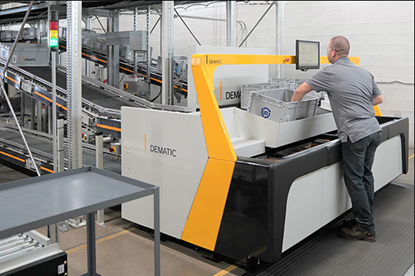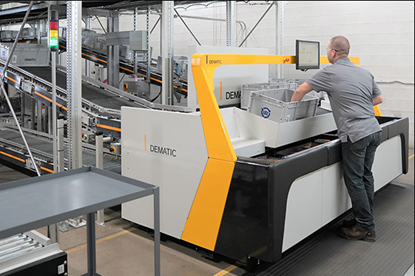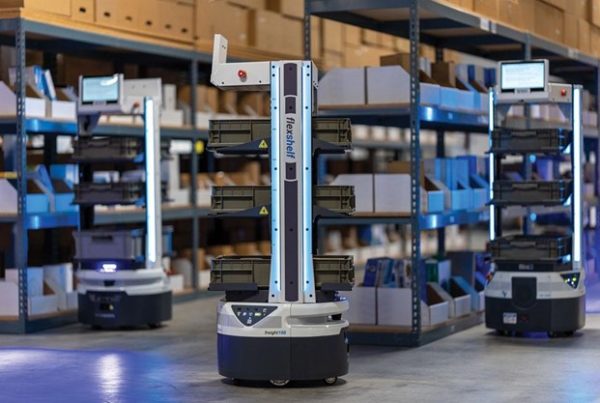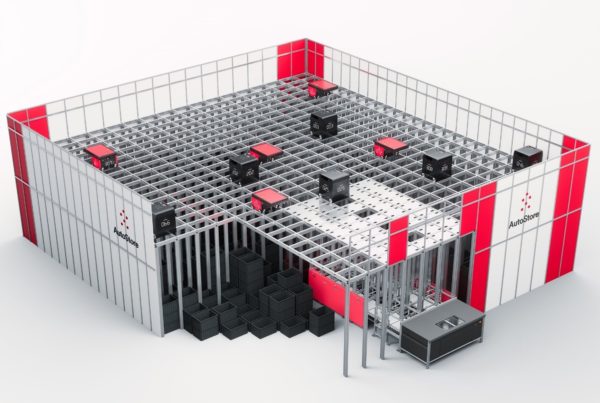Hello everyone! As we kick off the series, I thought it would be prudent to introduce myself and elaborate on my background a little bit. I have been involved in the warehouse automation industry since around the age of 14, when I started doing odd jobs for a local conveyor company, Transnorm System. As my education progressed, I eventually graduated to the prestigious title of “intern” during my time at the University of Dallas. After attaining my bachelor’s degree, I went on to earn an MBA with a concentration in finance, and I took a role at Dematic as an AutoStore subject matter expert.
As my regions grew from just the Central US to include, Western, Canada, and Mexico, I became very familiar with Goods-to-person systems, especially AutoStore and shuttle systems. After my first year at Dematic, I earned the “Global Sales New Hire of the Year” award, responsible for greater than 50,000,000 in GTP sales. Recently, I made the move to Slate River Systems to become an Account Executive specializing in Goods-to-person systems and I’m eager to share my knowledge with anyone who is interested in learning about the future of supply chain!
What are Goods-to-person?
Goods-to-person (GTP) is an order picking philosophy that revolves around eliminating excess movements within a facility, by utilizing automated storage and retrieval systems (ASRS) with stationary workers in order to significantly improve throughput when compared with manual walk and pick operations. In this GTP series, we will explore the systems together to learn more about potential efficiency gains you can realize in your operation.

Depicted above is the Dematic Multishuttle. As a partner of Dematic, this is just one of the many ASRS technologies SRSI can offer to consumers.
In order to understand which GTP solution is right for you, it is important to understand what purpose it can serve in an organization.
Goods-to-person has a number of benefits, particularly:
- Improved overall throughput
- Faster paced order turnaround
- Improved labor retention and resiliency
- Increased storage density
Improved Throughput
In the majority of applications I have seen, making rate was a key driver for pursuing goods to person technologies. While a picker doing discrete order picking may have to walk numerous aisles in a warehouse to get a few different items on different sides of the facility, a picker utilizing GTP would simply have the products brought to him. Different ASRS technologies allow for different rates, however many can deliver upwards of 400 donor totes [1] to a single operator within an hour.
Faster Paced Turnaround
Goods-to-person enables you to turnaround orders far quicker than standard methods of picking due to the inherent rate increases, along with its ability to facilitate quicker movement throughout a facility. If quick turnaround is a priority in an operation shipping individual orders, it is common for them to implement conveyor systems with their GTP systems for takeaway purposes. In such an application, a donor tote is presented to an operator, at which point he will pick the necessary product and transfer it to an order tote (or sometimes an order carton). This tote would then continue directly to the shipping area and either be shipped or consolidated there. This method allows for the faster order turnaround that is becoming expected in our market.
Improved Labor Retention and Resiliency
GTP technologies are proven to help retain labor, which is becoming imperative in our current labor market. It is very common to see warehouses with turnover in excess of 40% a year, leading to both additional training costs, and reduced efficiency. GTP solutions provide operators with an alternative to walking miles per day in a warehouse and allow for more comfort at a workstation. In addition to the labor retention benefits, you will also need less overall labor to maintain the same throughput because each individual GTP worker will be far more efficient than their manual counterparts.
Increased Storage Density
This one varies quite a bit depending on the ASRS technology we are discussing, however virtually all ASRS systems can significantly increase conventional storage when compared to standard storage methods. For example, AutoStore can potentially quadruple your storage capacity by providing a dense, almost airless system. This level of storage density has many CAPEX implications when it comes to weighing the cost of a new facility, vs automation. In my experience, this is the second biggest individual reason to consider GTP solutions, as the storage savings can lead to almost single year ROIs themselves.
Stay Tuned
There are many reasons to explore goods-to-person solutions, and realistically most of these factors will apply in varying degrees to your operation rather than just one. I’d be happy to go over some of the benefits of GTP with you in greater detail and analyze the potential impact for your operation. Check out my post next week to learn more about different GTP solutions, and what their different use cases are!
Thanks for reading,
Account Executive
Slate River Systems, Inc.
682-551-6849
________________________________________________________________________________________________________________________________________________________________________________________________
[1] Donor totes: They vary according to the technology, but it is easiest to think of them as bins of product.
 Skip to main content
Skip to main content




